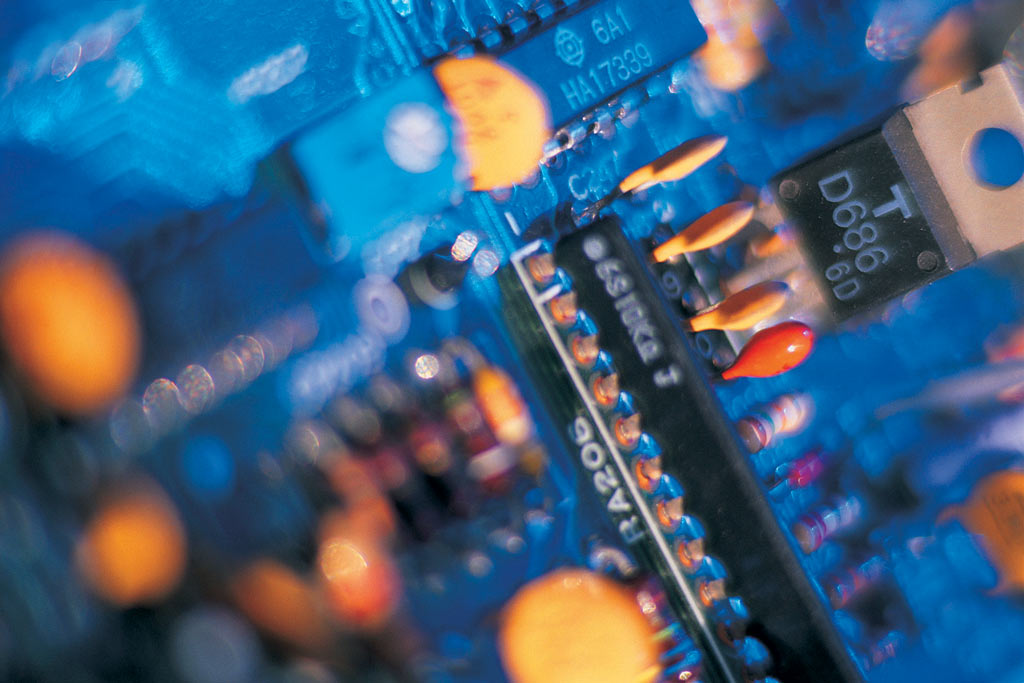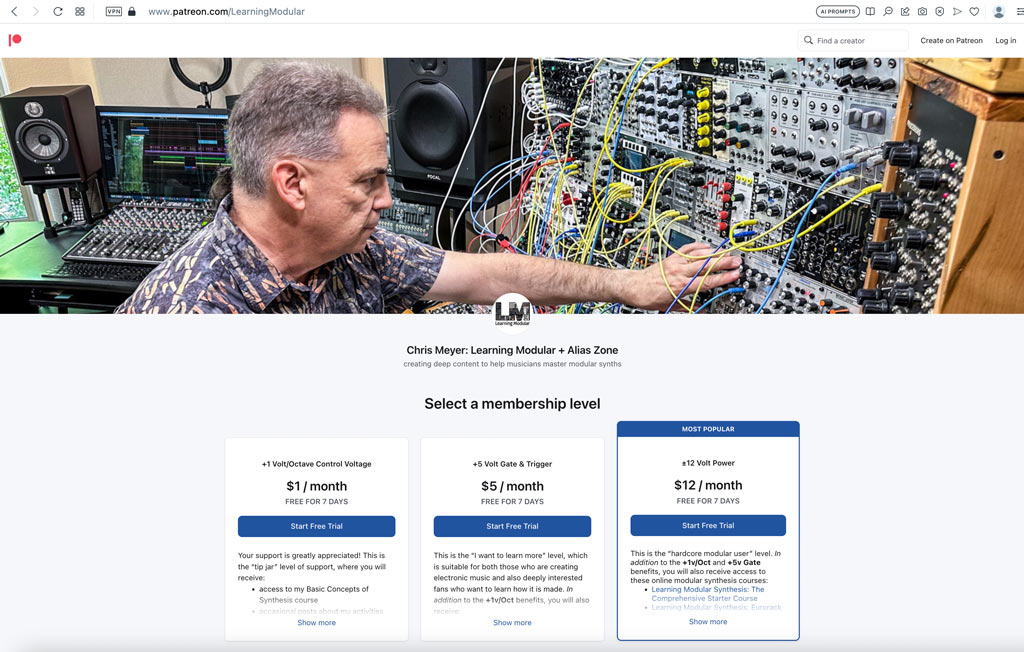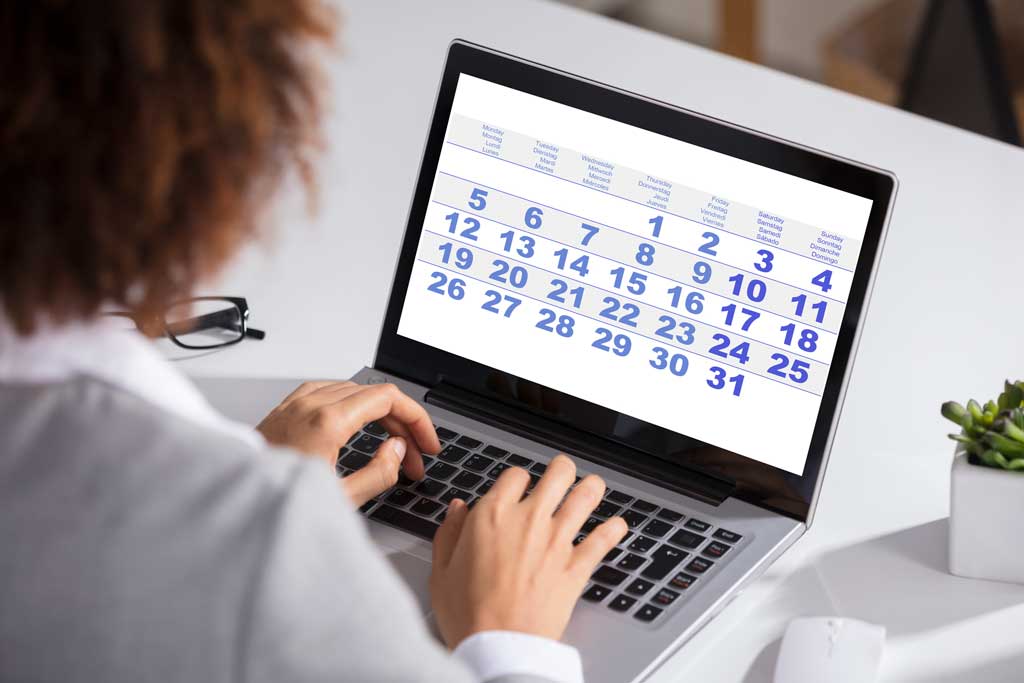June was a month of juggling. I helped organize and headlined an afternoon concert of instrumental electronic music at the Currents New Media Festival in Santa Fe, New Mexico; I started planning a potential new studio that will be Dolby Atmos compatible; I also have been editing my next album including recording overdubs for it. (While also injuring my right thumb, and trying to keep up with the normal household tasks like weeding the garden…)
Playing live is obviously a subject that’s been on my mind lately. At the same time, I’ve been reading (and watching videos) about the controversy of conventional musical acts using “backing tracks” as a substantial part of their live performance. This has caused me to bring a few thoughts together in my head, which is the subject of this month’s main article.
- featured article: Backing tracks are a controversial part of the performance of popular music. How does that apply to electronic music?
- Alias Zone updates: A video of the second half of my April performance at 17th Street Recording in Costa Mesa, California.
- Learning Modular updates: You probably need more power for your modular case than you’re planning on. Here’s how to calculate it.
- Patreon updates: A continuation of my in-depth Superbooth reports, and a subscriber-only sale of modules I’m clearing out to make room for what I liked at Superbooth. Plus: You may be missing out on some of your Patreon benefits…
- upcoming events: I am planning to return to Knobcon in September, and may possibly play a series of dates in North Carolina in October.
- one more thing: I’m learning about home studio acoustics. Here’s my new favorite resource.
“Backing Tracks” and Electronic Music Performance
I’ve been thinking a lot over the past couple of years about how to most effectively perform electronic music live. In parallel, the mainstream music world (rock, pop, rap, etc.) has also been debating the issue of using “backing tracks” (pre-recorded portions of the musical performance) live.
I wanted to take a little time to tie those two thoughts together – not necessarily to come up with “the answer”, but to explore some alternatives in case this might spark ideas of how to handle your own live performances. I am going to be making some broad generalizations – there are exceptions to every example or rule – but I think the overall trends (and solutions) should ring true.
The Early Days
In general, in the 1960s and 70s the modular synthesizer was considered too unwieldy for live performance. Yes, most of us can name people and bands such as Suzanne Ciani, Keith Emerson, Tangerine Dream, and many others who performed live in the 1970s with modular synths. However, they were hardly instruments you go throw in the back of a car to take to a gig, and changing sounds quickly was often accomplished by just having more modules.
An early attempt at making modulars more live-performance-friendly was the preset system Moog built into a few custom systems for the Jazz in the Garden series back in 1969; one of those systems indeed became the foundation for Keith Emerson’s monstrous Moog modular. Other solutions included partially pre-patched, semi-modular systems such as the ARP 2600, fully pre-wired systems such as the Moog Minimoog, and eventually preset memory in instruments such as the Sequential Prophet 5.
Diverging Paths
By contrast, many modern modular performers today just assume they can take their systems out and perform live – with substantially smaller systems than used in the old days. The Modular on the Spot series even has a rule that you can only use your modular(!) – no computers or non-patchable hardware synths.
To be fair, a lot of these performances tend to be shorter sets than a typical hour-plus concert, and also tend to stay within a particular style and a general timbral space. However, many have largely improvised segments in their performance, including re-patching their modulars as they play.
By contrast, hardware synthesizer based electronic music – mostly “ambient” (formerly “new age”) and other non-dance instrumental electronic music forms – has largely become a studio endeavor, despite the hundreds of presets each instrument holds. Although my own music fits into that broad category, most of my peers rarely or have never played live. It’s true that a lot of non-dance instrumental electronic music is based more heavily on layering of parts, with fewer programmable musical lines such as drum patterns, but still…it’s an interesting contrast.
The Hand-Wringing Over Backing Tracks
Most of my examples above include either solo musicians or small ensembles, which means a limited number of hands (and mouths and feet) having to play all of the musical lines. That said, an increasing number of non-solo-act bands don’t play all of the parts of their music live: To re-create what is heard on their albums (or streams), many of the parts have been pre-recorded, and they either play along with, sing along to, or even mime their performances over these.
This is not a new phenomenon; I remember reporting on a Devo concert over three decades ago where they had a four track cassette on stage with their backing tracks. You can even see a reel-to-reel tape recorder playing on stage with Tangerine Dream in the 1970s (many note that the visual part of that particular concert is actually a different performance than the soundtrack, but it’s period-correct). For that matter, some of the earliest “electronic music concerts” consisted of only a loudspeaker on stage!
Still, using backing tracks is definitely an increasing trend, with “playback” being a regular component of (semi-)live concerts, Rick Beato tackled this subject last year in a video that has nearly 800,000 views, and made the argument that if fans are expecting a live concert to resemble the recorded music of an artist, quite often this is the path that makes sense. David Byrne also discusses this in his book How Music Works (pages 137/8 of the physical edition).
So how does all of this relate to what we do?
Choices
- When we decide to perform electronic music live, we are faced with a few choices. Should we:
- limit our music to what we can physically play live?
- bring more gear to have more options for what we can play?
- enlist more musicians, to be able to have more parts or layers playing at the same time?
- have machines help us by playing some of the tracks themselves?
That last one could be considered using “backing tracks” – although electronic musicians in particular have far more nuanced, flexible options they can integrate into their performances (even improvisations) than the stereotypical “tape” with some or all of the music parts already recorded.
If you’re a solo musician trying to recreate a multi-tracked studio performance from an album – or simply have musical ideas that requires more layers and fingers to play them than your two hands can offer – then you do need to consider using some form of support from sequencers, arpeggiators, samplers, loopers or other devices to augment your live performance.
Paths
I faced this decision myself a couple of years ago. The main purpose of my original live performance modular system was so that I could act as “the drummer” when playing with others. Limited to this role, I had a lot of flexibility to improvise and even re-patch during the performance.
As part of this, I started getting opportunities to play solo sets – and honestly, I wasn’t satisfied with what both I and my existing performance system could do solo. However, I was happy with the music I was able to create in my full studio – so I started exploring how to recreate the sound of my studio live. I settled on a “hybrid” approach where I added a computer playing virtual instruments and loops, as well as doing the mix and adding effects; I’ve discussed this in previous newsletters.
Then I set the goal of playing longer sets, which gave me a higher target to aim for as I wanted to be able to change what piece I was playing during the set. So, I asked a few of my friends and peers how they performed longer concerts live.
The most common answer I got – from musicians as diverse as Trovarsi and Robert Rich – was choose what’s the one part you want to play live, and then sequence or pre-record the rest. If you’ve had the opportunity to see Robert play live, his main focus is playing “leads” on his flutes, guitar, and Haken Continuum as well as a few keyboards; his laptop is sequencing most of the other parts. He also does “live looping” where he will capture part of a live performance and then let it repeat while he either manipulates it or plays another part on top.
Allowing for Variations
Although David Byrne is not dead-set against backing tracks, he does note that the prerecorded nature of them means “that there is an inevitable excitement ceiling when it comes to these karaoke spectaculars (…) since there is never the possibility of the music rising beyond the preexisting programmed level.”
This means that if this is the path we choose in our performance, it would better if we planned for ways to change the nature of and even the order of those pre-recorded tracks, so we can alter the direction of a performance as it unfolds.
When I perform, the changes between sections in my music are not pre-programmed; I have control over when I start and stop loops, launch new sequencer “scenes”, and so forth. I can also create sequence variations on the fly and transpose the parts in real time, and often improvise how each section unfolds before moving onto the next one. Hand percussion introductions have also become a regular feature of my live performances. (All of this is in addition to live-editing of our synth patches, of course.)
I’m not saying I’m perfect at this; it’s something I feel I need to get better at, and I admit I’m still on my own personal learning curve about how to create longer and more varied live performances. But at least I have some ideas on how to go about it.
Alias Zone Updates
I had a “mini-tour” in April, ending with a showcase performance the evening before the NAMM show at 17th Street Recording Studio in Costa Mesa, California. What I didn’t expect was that local blogger Jose Corona of The Corona Chronicles was going to record my performances with his stabilized iPhone, including numerous close-ups of me playing (as well as a tour around the studio itself). Jose was kind enough to share the resulting videos with me, and studio owner Lewis Richards shared the audio he recorded. Above is the second half of my performance, including The Barefoot Trail: a piece about how the ancestors of the Zuni pueblo of Native Americans emerged from the underworld, and to this day make a pilgrimage to Zuni Heaven. (A studio version of that track is slated to be on the third of four new albums I am currently working on…maybe out this winter?)
I also helped arrange plus headlined an instrumental electronic music concert as part of the Currents New Media Festival in Santa Fe, New Mexico. Currents was held at the Santa Fe County Fairgrounds, and the afternoon concert venue was the “show arena” where livestock competitions are often held – complete with the sandy floor and metal bleachers (fortunately, we had a riser so we could set up our gear up out of the sand!). Combined with the open sides for the covered space and the ambient noise of the festival (outdoor vendors and food trucks), it was not a good venue for quiet, delicate music…fortunately, I was playing a couple of my more energetic pieces! There is video and audio of my performances; when I have some spare time I’ll edit and release them.
Finally, work continues – albeit more slowly than I originally planned – on my next album. As it includes a couple of older compositions, I’m taking this opportunity to update them a bit; I might also record a brand-new piece for this album. We’ll see what happens…
Learning Modular Updates
A common problem many users run into is to simply not have enough power. The number that ModularGrid provides by adding up the specs provided by manufacturers only reflects an average, steady demand; it can go up while the module is, say, turning on more LEDs, and can go up substantially when the module is first turned on. Symptoms of not enough power can range from occasional random behavior to a case not even power up.
Therefore, it was nice to observe that one of the quiet trends at Superbooth this year was a lot of companies releasing new power boards for Eurorack synths. In particular, manufacturers seem to be designing more for a worst case of a user loading their system with power-hungry modules, rather than an average case for “typical” modules. One example of this is Tiptop including a more powerful external power brick with their Mantis case than they did initially.
I wrote a Patreon post about how to calculate power needs, including arguing against the “conventional wisdom” that 10-20% of additional headroom above the ModularGrid is enough (if you really want to be safe, plan on double the power you think you’ll need). I made this post available for free to everyone; check it out the next time you’re planning a Eurorack system.
Patreon Updates
In between my musical and studio-planning pursuits, I also wrote a couple more of my detailed Superbooth show reports (available to +5v and above subscribers):
- Superbooth 2023, part 3: ALM, Raw Yaw, Venus, Faded, and TiNRS
- Superbooth 2023, part 4: Making Sound Machines, Apollo View, Vaski Embedded, Knobula, Soundmachines
I also offered up more of my modules for sale at special prices for +5v and above subscribers; click here to see the list.
If you are a subscriber, I hope you saw those posts; my own email provider actually blocked that last one – that’s one of the reasons I include these summaries of new posts in each newsletter. Make sure you check them out to be sure you didn’t miss something.
Also, depending on when you subscribed and at what level, part of your benefits may include access to one or more of my modular synthesis courses. However, I often see that over half of subscribers don’t take advantage of that; I suspect many of those introductory emails got caught by spam filters. If you didn’t realize (or forgot) that you may have this perk, go to courses.learningmodular.com/login, and enter the email address you use for Patreon plus the password you created for my courses site. If you don’t know your password, click on the “Forgot password?” link underneath the big LOGIN button and reset it.
And if you’re wondering what this Patreon business is all about, click here to check out the index of articles I’ve written so far. If you find something interesting, sign up and check it out; you get the first 7 days free.
Upcoming Events
September 9: Knobcon Chillout Room, Schaumburg, Illinois. This year I will be playing Saturday afternoon as part of the “afternoon ambience” program.
I have also been planning for months to play a series of gigs in Asheville, Durham, and Charolette, North Carolina the first half of October, but none of them are actually confirmed yet. We’ll just have to see how that plays out.
One More Thing…
One of the things I’m most worried about while designing my potential new studio is acoustics. I’ve been trying to educate myself using searches and manufacturer websites, but there’s a lot of incomplete, confusing, and even contradictory information out there, which often leads to just making purchase decisions based on looks and price – not the most scientific method.
In my searches, I accidentally stumbled across the YouTube channel for Acoustics Insider. At last: Someone who was explaining acoustics clearly (including busting myths and misconceptions). Jesco Lohan uses just enough science to back up his thoughts without becoming confusing or pedantic, and overall believes in the advice of Albert Einstein that “Everything should be made as simple as possible, but not simpler.” This led me to his website and email list, and that led me to buying his courses.
In addition to the modular synthesis courses and book you may know me for, I also co-wrote 13 books and was involved in creating close to 50 courses on motion graphics (a specialty inside computer graphics), so I’m very picky about how information is presented. I have to say, Jesco has blown me away with the clarity and usefulness of his courses, including his customer interaction. I now feel a lot more confident about designing my studio, where before I was just going to spend a lot of money, throw a bunch of stuff at the walls (and ceiling, and corners, and…) and hope it worked. I’m so enthused, I wanted to share his site with you. (I’m not getting a sales commission or anything; I just like it that much!)
As I hinted in the introduction this month, I’m so busy right now that I’m getting a bit overwhelmed. These newsletters take about 3 days on average to create, which cuts into the time for everything else. So, I’m considering ways to cut back, such as writing a major main article (the biggest time consumer) less often, or even going to every other month for the entire newsletter. Suggestions and comments on what you want – as always – are helpful; let me know in the comments below.
looking for that eighth day in the week –
Chris






